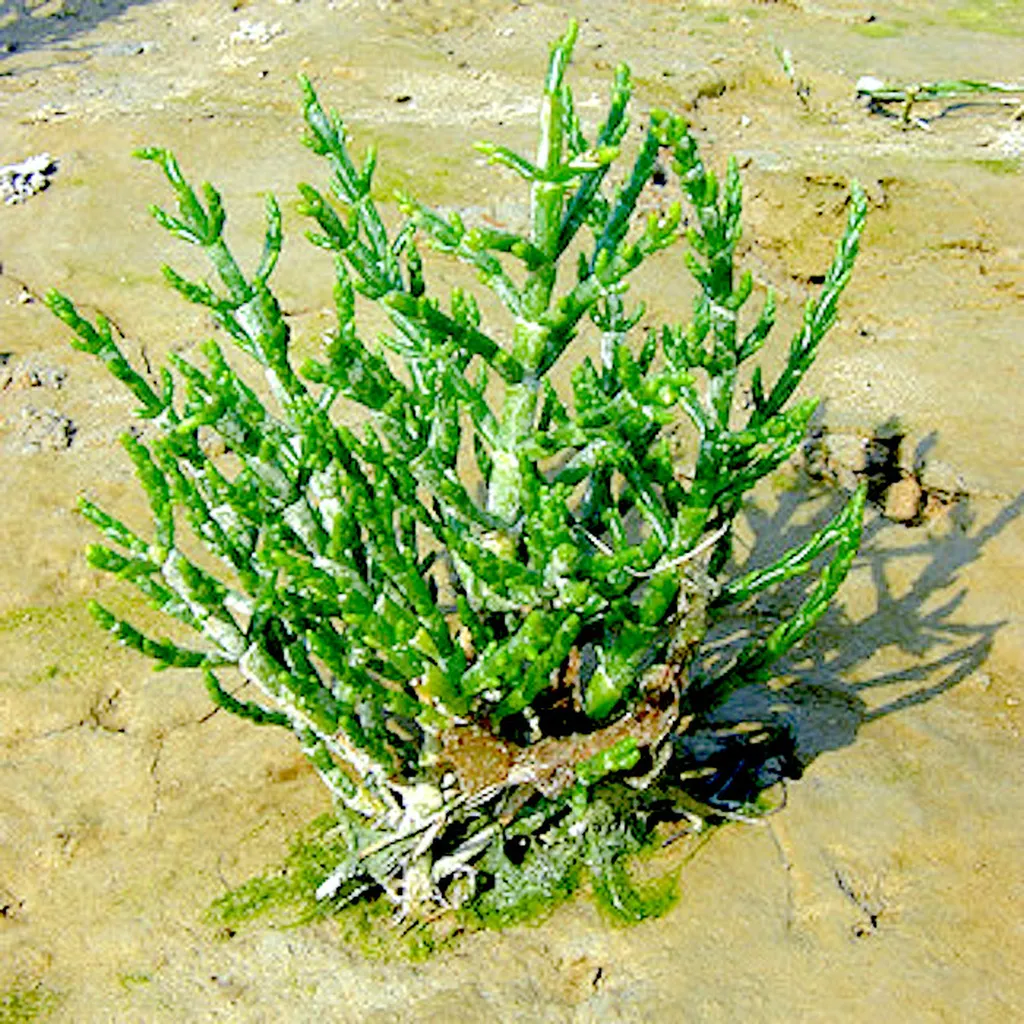In the heart of Europe, a humble halophyte is making waves in the world of agritech. *Salicornia europaea*, a salt-loving plant, is not just surviving but thriving in inland saline habitats, offering promising avenues for agriculture and environmental remediation. A recent study published in *Plants* has unveiled the remarkable adaptability of this plant, with implications that could reshape saline agriculture and phytoremediation strategies.
The research, led by Agnieszka Piernik from the Department of Geobotany and Landscape Planning at Nicolaus Copernicus University in Toruń, Poland, explored the functional trait variability of *Salicornia europaea* across different inland saline habitats. The study focused on populations from four isolated sites: Ciechocinek, Inowrocław, Salzgraben, and Soltauquelle, each with unique soil conditions.
Piernik and her team grew seeds from these sites under varying salinity levels (0, 200, 400, and 1000 mM NaCl) and quantified morphometric traits from digital images. The results were striking. “We found a strong relationship between population origin and responses to salt stress,” Piernik explained. “Optimal growth generally occurred at 200–400 mM NaCl, but the populations showed distinct adaptive strategies.”
The study revealed that shoot canopy area was the best discriminator among populations. Inowrocław and Salzgraben populations performed exceptionally well under extreme salinity (1000 mM), while Ciechocinek showed the weakest growth. Root analyses indicated a shift from radial expansion at moderate salinity to elongation at higher levels, with Salzgraben and Soltauquelle maintaining the longest roots.
Soil analyses added another layer of complexity. Ciechocinek had the highest salinity, resulting in the smallest trait development. Inowrocław was rich in calcium and organic matter, while the German sites had lower salinity but higher pH and bicarbonates. These findings highlight the influence of soil-legacy effects on plant adaptation.
The commercial implications of this research are substantial. As freshwater resources become scarcer and soil salinity increases due to climate change, understanding the adaptive strategies of halophytes like *Salicornia europaea* is crucial. “This study supports targeted ecotype selection for saline agriculture and phytoremediation,” Piernik noted. “By leveraging population-specific traits, we can develop more resilient crops and effective remediation strategies.”
The study also opens doors for further research. Future investigations could explore the genetic basis of these adaptive traits and how they can be harnessed for crop improvement. Additionally, understanding the soil-plant relationship in more detail could lead to innovative agricultural practices that maximize yield in saline environments.
In the broader context, this research underscores the importance of biodiversity in agriculture. The diverse adaptive strategies observed among *Salicornia europaea* populations highlight the potential of untapped genetic resources. By integrating these findings into agricultural practices, we can enhance food security and environmental sustainability.
As the world grapples with the challenges of climate change and resource depletion, the humble *Salicornia europaea* offers a beacon of hope. Its remarkable adaptability and the insights gleaned from this study could pave the way for a more resilient and sustainable future in agriculture.

